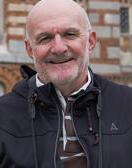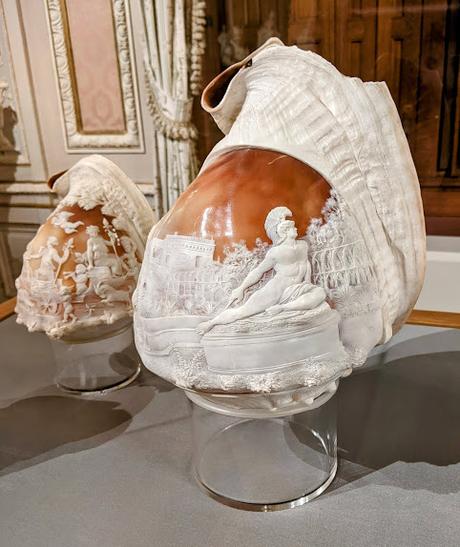
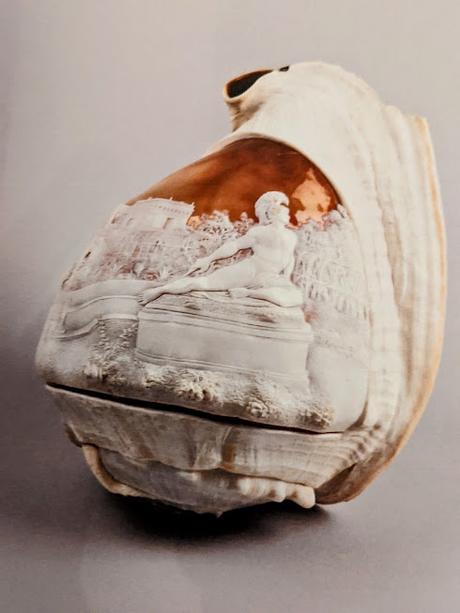
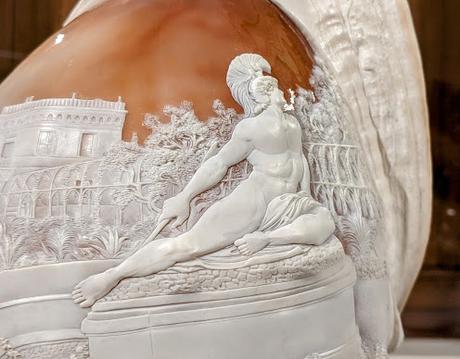
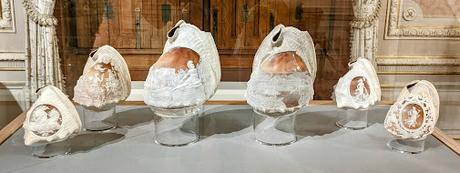
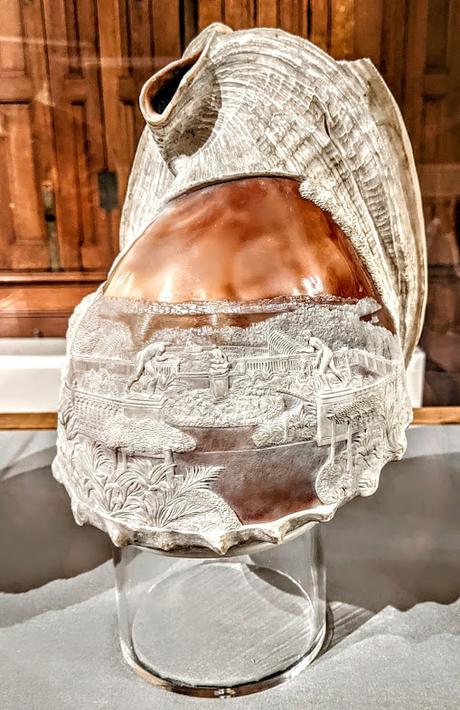
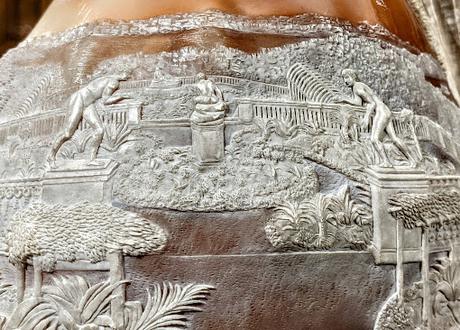
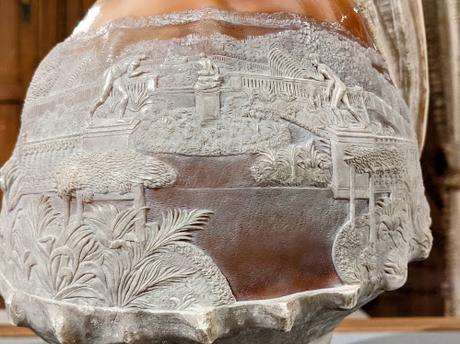 Photos © Luc-Henri Roger
Photos © Luc-Henri Roger[EN] In the Villa Hermes in Lainz there is a display case showing a collection of large helmet or casis shells which were carved by the firm of Luigi Casalta on behalf of the empress. The two larger shells depict views of the Achilleion gardens, including the famous Wounded Achilles by Ernst Herter,
The Luigi Casalta House in Naples, specialized in the production of bindings, works of art and antique, Pompeian, Etruscan and Roman jewelry in gold, cameo, coral and lava from Vesuvius, of very high quality, was a supplier to the Imperial Court of Austria, but also of the Royal Court of Italy and Princess Louise of Prussia.
Ernst Herter (1846-1917) was a German sculptor, specializing in the creation of statues of mythological or historical inspiration. Among his most famous statues is the Dying Achilles or Wounded Achilles (German: Sterbender Achilles), created in Berlin in 1884. This statue was acquired by Empress Elisabeth of Austria, who made it the centerpiece of his Corfiot palace, the Achilleion. We owe to Herter the statue of Hermann von Helmholtz in Berlin, the Monument to Heinrich Heine in the Bronx in New York and the Hermès at the Hermesvilla in Vienna.
[FR] Dans la villa Hermes à Lainz on peut admirer une vitrine présentant une collection de grands coquillages casque ou cassis qui furent sculptés sur commande de l'impératrice par la maison Luigi Casalta. Les deux coquillages plus grands reproduisent des vues des jardins de l'Achilleion avec notamment le fameux Achille blessé d'Ernst Herter,
La Maison Luigi Casalta à Naples, spécialisée dans la réalisation de reliures, objets d'art et bijoux antiques, pompéiens, étrusques et romains en or, camée, corail et lave du Vésuve, de très grande qualité, était fournisseur auprès de la Cour impériale d'Autriche, mais également de la Cour royale d'Italie et de la princesse Louise de Prusse.
Ernst Herter (1846-1917) était un sculpteur allemand, spécialisé dans la création de statues d'inspiration mythologique ou historique. Parmi ses statues les plus célèbres, on trouve l'Achille mourant ou Achille blessé (en allemand : Sterbender Achilles), créé à Berlin en 1884. Cette statue fut acquise par l'impératrice Élisabeth d'Autriche, qui en fit la pièce centrale de son palais corfiote, l'Achilleion. On doit à Herter la statue de Hermann von Helmholtz à Berlin, le Monument à Heinrich Heine dans le Bronx à New York et l'Hermès à la Hermesvilla de Vienne.
